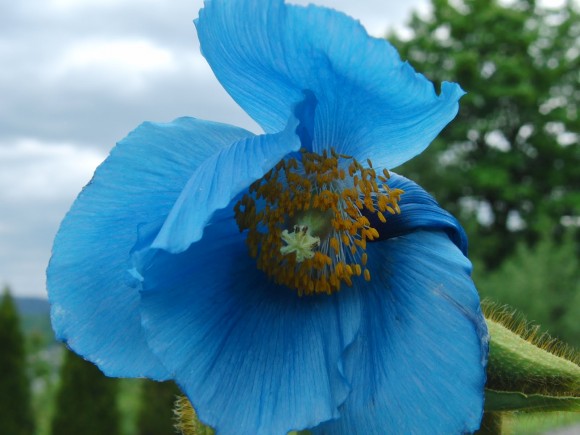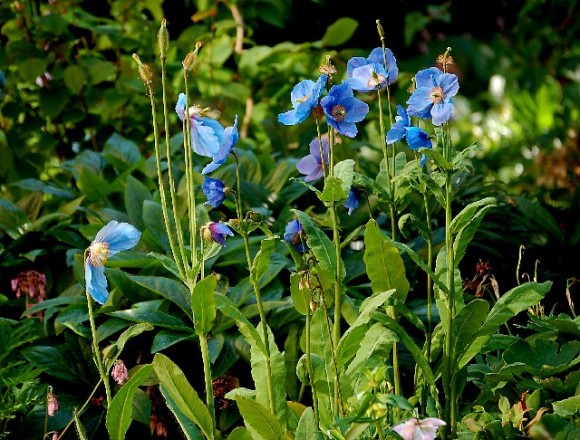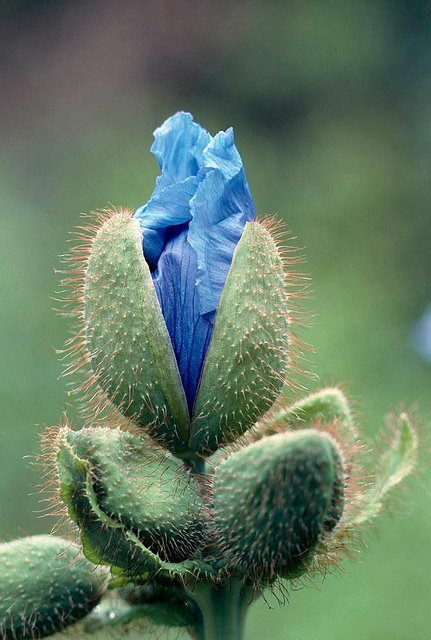
If there is one plant that catches people’s attention, it is the Himalayan blue poppy or Meconopsis. The blue poppy is fascinating because of the big, beautiful, blue flowers that are held above the light green foliage. The 4 petals surround an orb of yellow-tipped stamens which gives it the poppy-like appearance. The allure of the plants is partially due to the fact that the flower color is not commonly found in nature but probably as much so to their exotic history and extreme difficulty in growing.

While I was in graduate school, my classmate, Shannon Still (now PhD.) researched Meconopsis in order to determine which plants were the strongest growers. He found that Meconopsis ‘Lingholm’ was one of the strongest growers. This is due to its hybrid nature (a seedling grown from two different species) and its extra chromosomes (this makes it a fertile hybrid with larger flowers). If you really want to dig into the history of Meconopsis ‘Lingholm,’ read it here.
In a garden setting, Meconopsis are notoriously finicky and short-lived. They grow well in the Himalayas, parts of Scotland, and parts of Alaska. So imagine our surprise at Coastal Maine Botanical Gardens this spring, when all of our M. ‘Lingholm’ plants started reemerging from the ground! We think that our rich soils, good snow cover most of the winter, and cool summers (we rarely go above 85 degrees) aid in the success of growing these plants. We just bought in more Meconopsis as it would be my dream to have a huge drift of them going through the garden. Stay tuned… and come see them in flower during mid to late May.
–Rodney
Images: planteoversikt.blogspot.com, alpinegardensociety.net, sun-gazing.com

Beautiful pictures! The blue pops right out of the picture!
What a beautiful flower! I would love to see it in person.
I had a couple of huge swaths of these back in Alaska, they actually started self seeding and taking over parts of my garden. They are one of the plants I still miss growing since I moved to California, but even with trying them in my coolest corner and icing them weekly over the winter they just don’t like Berkeley’s mediterranean climate. Oh well, I can grow so many cool things and have more than 95 days to do it!
Wow! Self seeding Meconopsis and now the California climate. Both sound wonderful. – rodney
I saw this is person at the Botanical Gardens in Reykjavik. Breathtaking doesn’t come close to describing them, and aesthetically so appropriate to the climate, somehow.
I came home wondering why everyone in Iceland doesn’t have a yard full of these! I fell in love with them, but, alas, I live in Alabama…